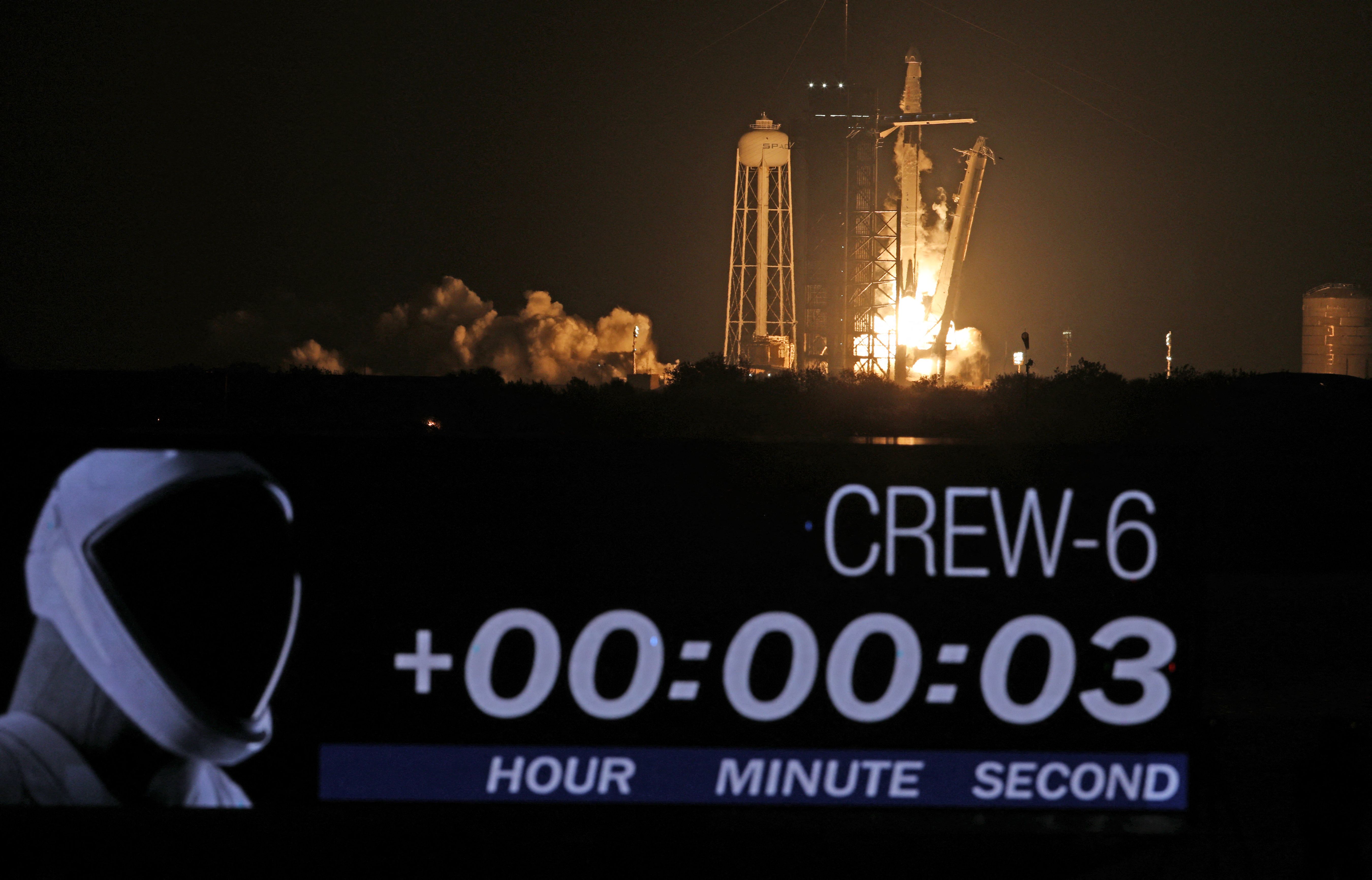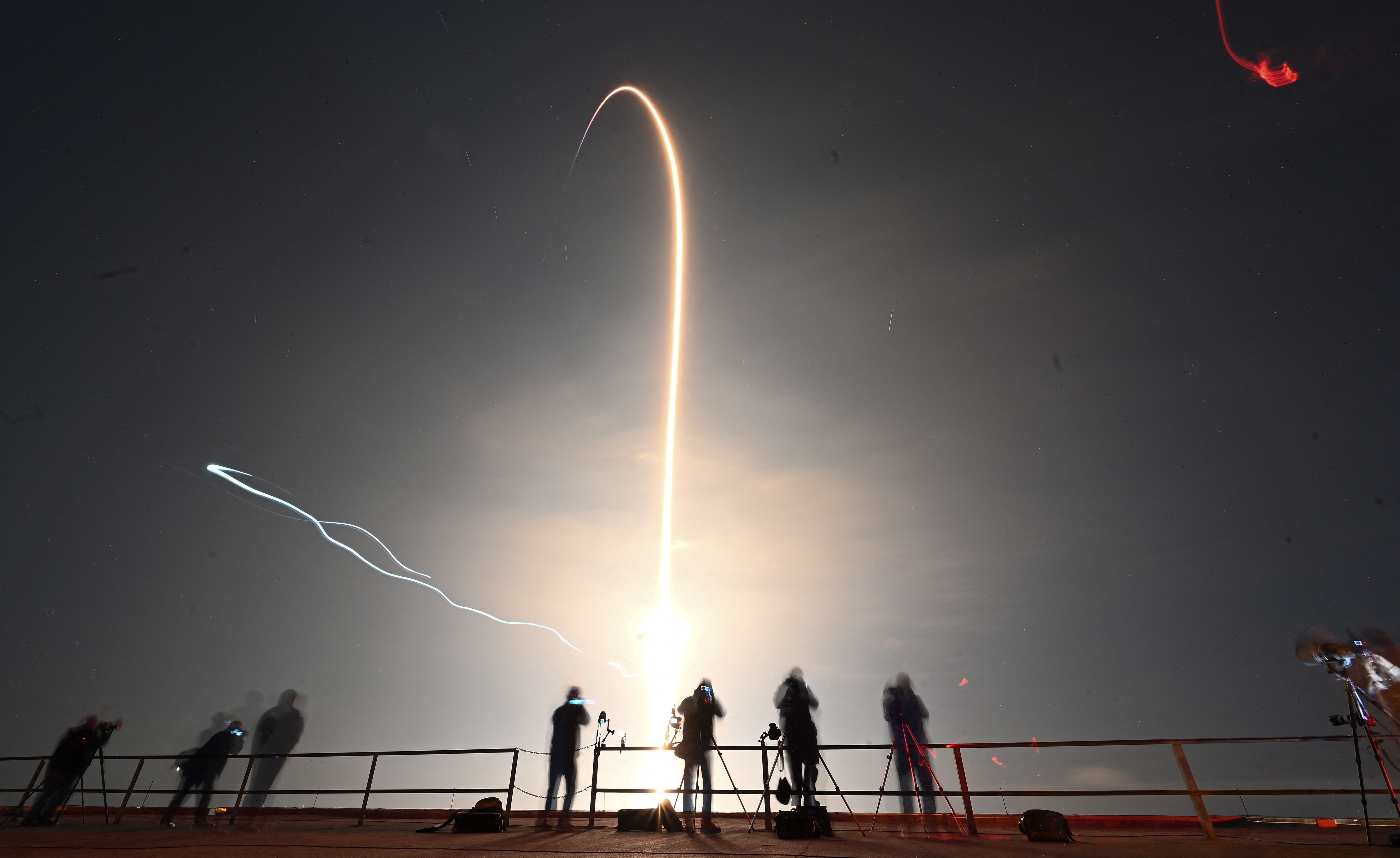SpaceX Crew 6 liftoff lights up the sky in stunning photos
SpaceX's Crew-6 mission launched on Thursday morning (March 2).
There's nothing quite like a night launch.
SpaceX launched the Crew-6 mission early on Thursday (March 2) atop a Falcon 9 rocket launched from NASA's Kennedy Space Center in Cape Canaveral, Florida, carrying the Crew Dragon Endeavour spacecraft and the four crewmembers inside. The team is headed to the International Space Station (ISS) to perform a 6-month space science mission. The launch took place at around 12:34 a.m. EST (0534 GMT) from Space Launch Complex 39A at Cape Canaveral Space Force Station, Florida, according to the company’s website.
The liftoff and the subsequent journey to the upper atmosphere were captured in a series of stunning images from SpaceX, NASA, and other onlookers that perfectly demonstrate the power and drama of rocket launches.
Related: SpaceX launches Crew-6 astronaut mission to space station for NASA
Read more: Meet the SpaceX Crew-6 astronauts launching to the International Space Station on Feb. 26
Many of the images show the Falcon 9 framed in orange lighting up the dark midnight skies over Florida. Other images show the rocket as it climbs toward orbit to jettison the upper stage, leaving in its wake a massive glowing cloud at its launch position and a bright fiery trail in the dark sky.
Following the successful separation of the upper stage and the Dragon crew module from the Falcon 9's first stage, after just over 2.5 minutes of flight, the upper stage continued to space.
Around 9.5 minutes after launch, the lower stage returned to Earth and successfully landed on SpaceX's floating droneship Just Read the Instructions (JRTI) positioned in the Atlantic Ocean off the coast of Florida. Dragon Endeavor is expected to dock at the station on Friday (March 3) at around 1:17 a.m. EST (0617 GMT) in the morning.
Breaking space news, the latest updates on rocket launches, skywatching events and more!
After 12 minutes the upper stage separated from the Dragon Endeavor crew module leaving its passengers the Crew-6 team hurtling towards the ISS at around 17,500 miles per hour (28,000 kilometers per hour), according to NASA. This moment in the mission was also imaged, with a NASA picture capturing the moment that the Endeavour capsule separated from the Falcon 9 upper stage from the perspective of the latter.
The Crew-6 crew is made up of NASA astronauts Stephen Bowen and Warren "Woody" Hoburg, United Arab Emirates astronaut Sultan Al Neyadi and Roscosmos cosmonaut Andrey Fedyaev. Among the science missions conducted by the crew will be the collection of molecules from outside the ISS and the investigation of the effects of long-term space missions on human health.
Read more: SpaceX Crew-6 astronauts will answer 'burning questions' with space station science
Space.com previously reported that Crew-6 pilot Hoburg, told SpaceX operators just after separation: "Just want to say, as a rookie flyer, that was one heck of a ride. Thank you!"
Hoburg wasn't the only rookie on this mission; this was also the first liftoff and landing for the Falcon 9 lower stage, which was used rather than a lower stage with a series of missions under its figurative belt such as the lower stage used to carry Starlink V2 satellites to orbit on Monday.
That lower section had been used on two previous missions in January 2023, and November 2022, before it successfully touched down on the other SpaceX floating drone ship, A Shortfall of Gravitas, also positioned in the Atlantic Ocean.
Follow us on Twitter @Spacedotcom or on Facebook.

Robert Lea is a science journalist in the U.K. whose articles have been published in Physics World, New Scientist, Astronomy Magazine, All About Space, Newsweek and ZME Science. He also writes about science communication for Elsevier and the European Journal of Physics. Rob holds a bachelor of science degree in physics and astronomy from the U.K.’s Open University. Follow him on Twitter @sciencef1rst.






